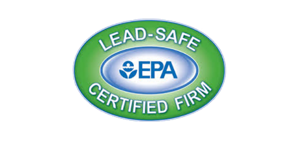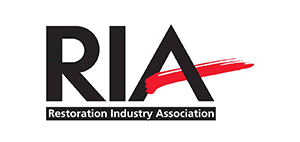Water damage in your home can be a hassle, but it can also cause long-term damage that may not be apparent at first. Knowing the signs of permanent water damage can help you address the issue before it becomes too severe.
In this section, we’ll explore common signs that indicate lasting harm and help you understand what to look for.
Key Takeaways
- Water damage can cause permanent harm to your home.
- Visible stains, mold growth, structural compromise, lingering moisture, and electrical issues are all signs of long-term water damage.
- Prompt attention to these issues is crucial in preventing further damage and ensuring the safety and longevity of your property.
Visible Stains and Discoloration
If you notice water stains or discoloration on surfaces in your home, it could be a sign of permanent damage. These markings may indicate that water has seeped into your building materials and caused staining or discoloration that cannot be reversed. In some cases, these stains may even show mold or mildew growth, which can pose health risks if left unchecked.
It’s important to inspect different areas of your home for visible water damage, such as ceilings, walls, floors, and baseboards. Look out for yellow, brown, or rust-colored discoloration, as well as sagging or bowing of material. These could be a signal of water damage beneath the surface.
Be mindful that not all stains or discoloration will be visible to the naked eye, so paying close attention to any changes in the texture or appearance of your materials is key.
| Types of Water Stains and Discoloration | Description |
|---|---|
| Dark Staining | Indicates long term contact with water, and may show the presence of mold. |
| Yellow or Brown Blemishes | Show previous water exposure, but not necessarily prolonged exposure. |
| Cracked or Peeling Paint or Wallpaper | Can indicate prolonged water exposure, leading to weakened adhesion. |
By identifying visible water stains and discoloration in your home, you can determine if damage is permanent. Paying close attention to these signs can help prevent further deterioration of your property.
Mold Growth and Mildew Odor
When water damage occurs, mold and mildew can begin to grow and spread in affected areas. These fungi thrive in moist environments and feed on organic materials, creating lasting damage over time. The presence of mold growth and a persistent mildew odor can be indicators of long-term water damage.
Identifying mold growth can be challenging, as it often hides in dark or hard-to-reach places. Look for visible signs of mold, such as black spotting on walls or ceilings, or a fuzzy white or green film on surfaces. A musty odor is another clear indication of mold or mildew growth.
If you suspect mold growth in your home, it’s crucial to address the issue promptly. Not only can mold cause structural damage and compromise the safety of your property, but it also poses health risks to you and your family. Exposure to mold can trigger respiratory issues and allergic reactions, especially in those with asthma or weakened immune systems.
To prevent mold growth, it’s essential to address water damage as soon as it occurs. Proper ventilation, dehumidification, and quick clean-up can help control moisture levels and discourage mold and mildew growth. If you’ve experienced extensive water damage, it may be necessary to consult with a professional remediation service to ensure safe and thorough cleanup.
Structural Compromise
Water damage has the potential to cause significant structural damage to your home. When the foundation or other structural materials are compromised, it can lead to costly repairs and safety hazards. Signs of structural damage include:
| Signs of Structural Damage | Why it Signifies Permanent Damage |
|---|---|
| Cracks in walls or ceilings | Water can weaken building materials, leading to cracks that may not be easily repaired. |
| Uneven floors or sagging ceilings | Waterlogged materials, such as floorboards or joists, can weaken and warp, causing unevenness in the floors and ceilings. |
| Doors or windows that don’t open or close smoothly | Water can cause wood to swell or warp, making it difficult for doors and windows to open and close properly. |
| Visible mold growth on structural elements | If mold is growing on the structural elements of your home, it can compromise the integrity of the materials, causing permanent damage. |
If you notice any of these signs of structural damage in your home, it’s crucial to act quickly. A weakened foundation or compromised materials can lead to safety hazards and further damage. Contact a professional to assess the extent of the damage and determine the best course of action. Remember, prompt attention to water damage can save you from costly repairs down the line.
Lingering Moisture and Dampness
It’s easy to assume that once water damage has been repaired, there’s no further risk of harm. Unfortunately, that’s not always the case. Lingering moisture and dampness can contribute to permanent damage if left unchecked.
If you’ve experienced recent water damage, it’s essential to address this issue promptly. Lingering moisture can seep into porous materials like drywall and carpet, leading to mold growth and lingering odors. Additionally, it can cause structural deterioration, compromising the integrity of your home.
To identify lingering moisture and dampness, pay attention to persistent odors or moisture in the air, warped or buckled floors, or persistent damp spots. These signs can help you identify areas that need attention. Give your home a thorough inspection to ensure that there are no lingering issues.
If you do detect lingering moisture or dampness, it’s essential to address the issue as soon as possible. Consider contacting a professional water restoration company that can assess the damage and provide the necessary repairs. The longer you wait, the more severe the damage can become.
Electrical Problems
Water damage can result in electrical issues, creating potential safety hazards in your home. When water comes into contact with electrical wiring, fixtures, or outlets, it can lead to short circuits or even electrical fires. It’s essential to understand the warning signs of electrical problems after water damage to avoid injury or damage to your property.
Some of the noticeable signs of electrical issues due to water damage are:
| Warning Signs | Possible Hazards |
|---|---|
| Sparking when turning on switches or outlets | Fire hazard |
| Discolored or hot electrical outlets or switches | Fire hazard |
| Burning smell near electrical fixtures | Fire hazard |
| Circuit breakers tripping often | Sign of overloaded circuits, which can cause a fire |
If you notice any of these warning signs or suspect that there may be electrical problems in your home after water damage, it’s essential to contact a licensed electrician to assess the situation. Avoid handling any electrical components yourself, as it can be dangerous and lead to electrical shock.
Remember that when dealing with water damage, prioritizing safety is crucial. Taking appropriate precautions and addressing electrical issues promptly can prevent significant damage and safeguard your family and property.
Conclusion
Identifying permanent water damage signs can be crucial to the safety and longevity of your property. By paying attention to visible stains, mold growth, structural compromise, lingering moisture, and electrical problems, you can determine if water damage in your home is likely permanent. If you notice any of these signs, it’s important to take swift action to address them promptly. Failure to do so may cause further harm to your property, resulting in more significant losses. Remember, prevention is always better than cure.
FAQ
How can I identify permanent water damage signs in my home?
You can look for visible stains and discoloration, mold growth and mildew odor, structural compromise, lingering moisture and dampness, and electrical problems as indicators of permanent water damage.
What are some visible signs of water damage?
Visible signs of water damage include stains and discoloration on walls, ceilings, floors, and furniture.
How can I identify mold growth and a mildew odor?
Look for visible mold growth, such as dark spots or fuzzy patches, and a persistent musty odor.
What are some signs of structural damage caused by water?
Signs of structural damage may include a compromised foundation, sagging or warped walls, and waterlogged materials.
How can I detect lingering moisture and dampness?
Check for damp spots, peeling paint or wallpaper, and a musty smell even after the initial water has dried up.
What are the potential electrical problems associated with water damage?
Water damage can lead to electrical issues such as short circuits, malfunctioning outlets, and flickering lights.
Why is it important to address water damage promptly?
Addressing water damage promptly is crucial to prevent further damage, ensure the safety of your property, and avoid long-term issues like mold growth and structural compromise.





















